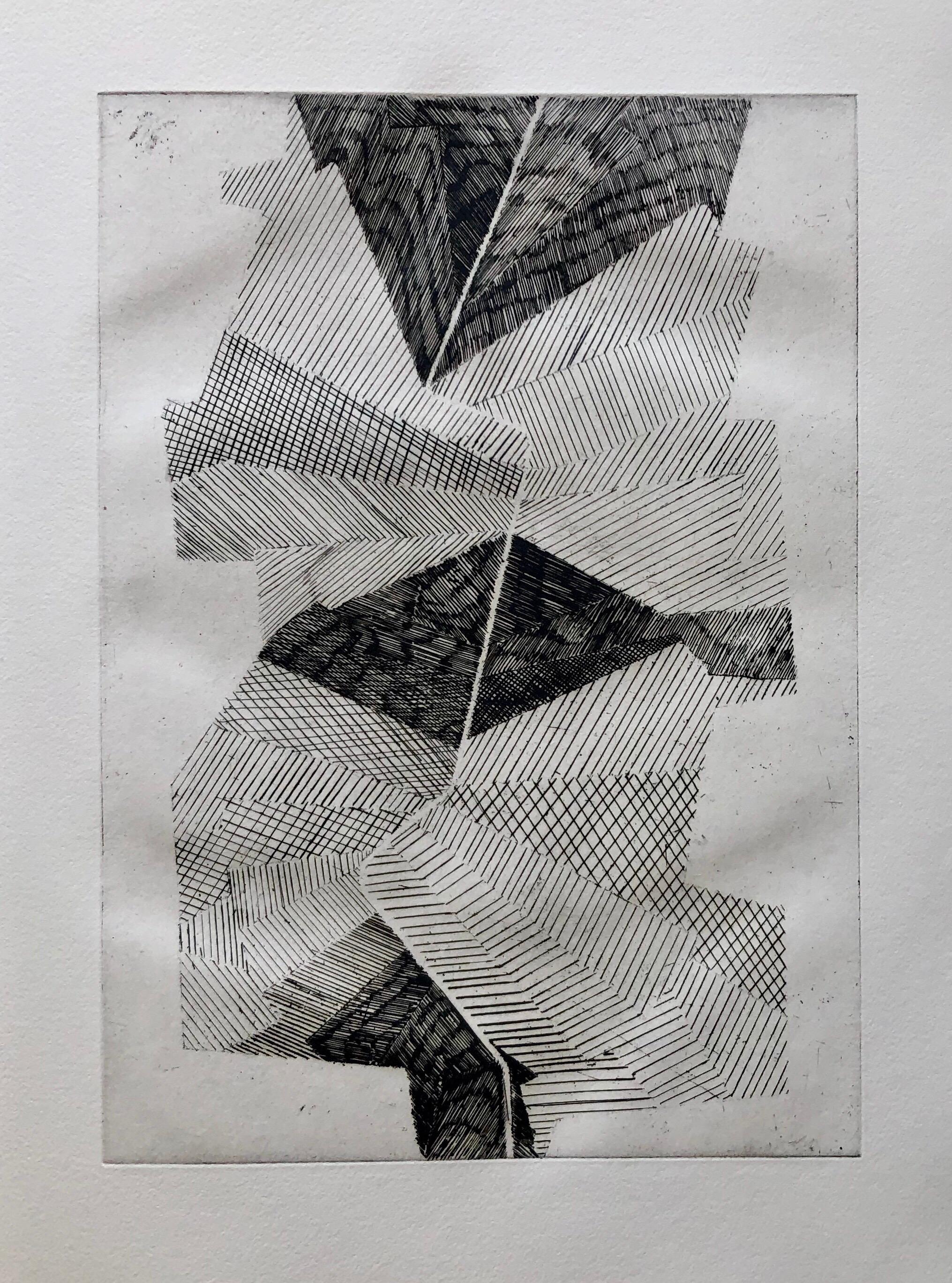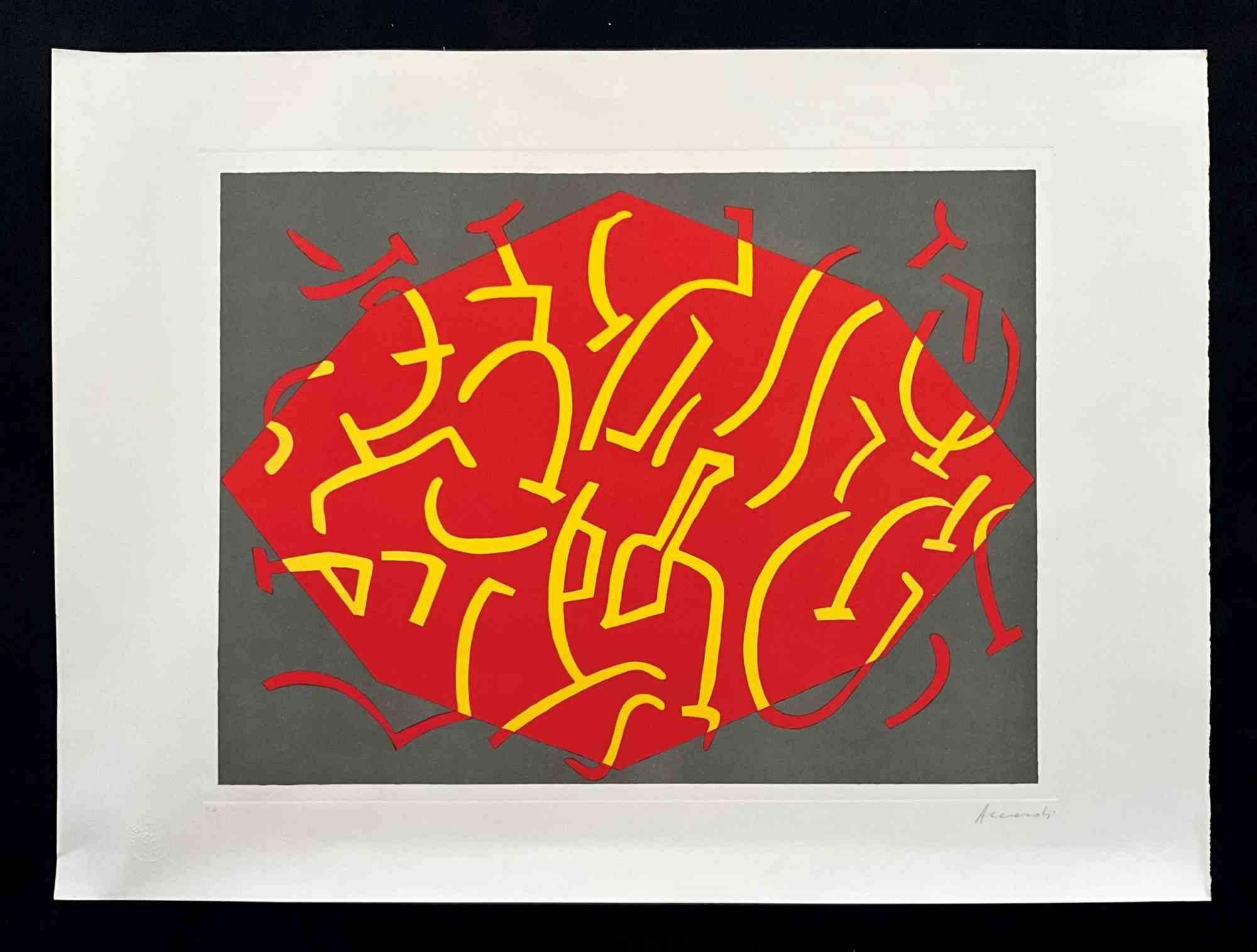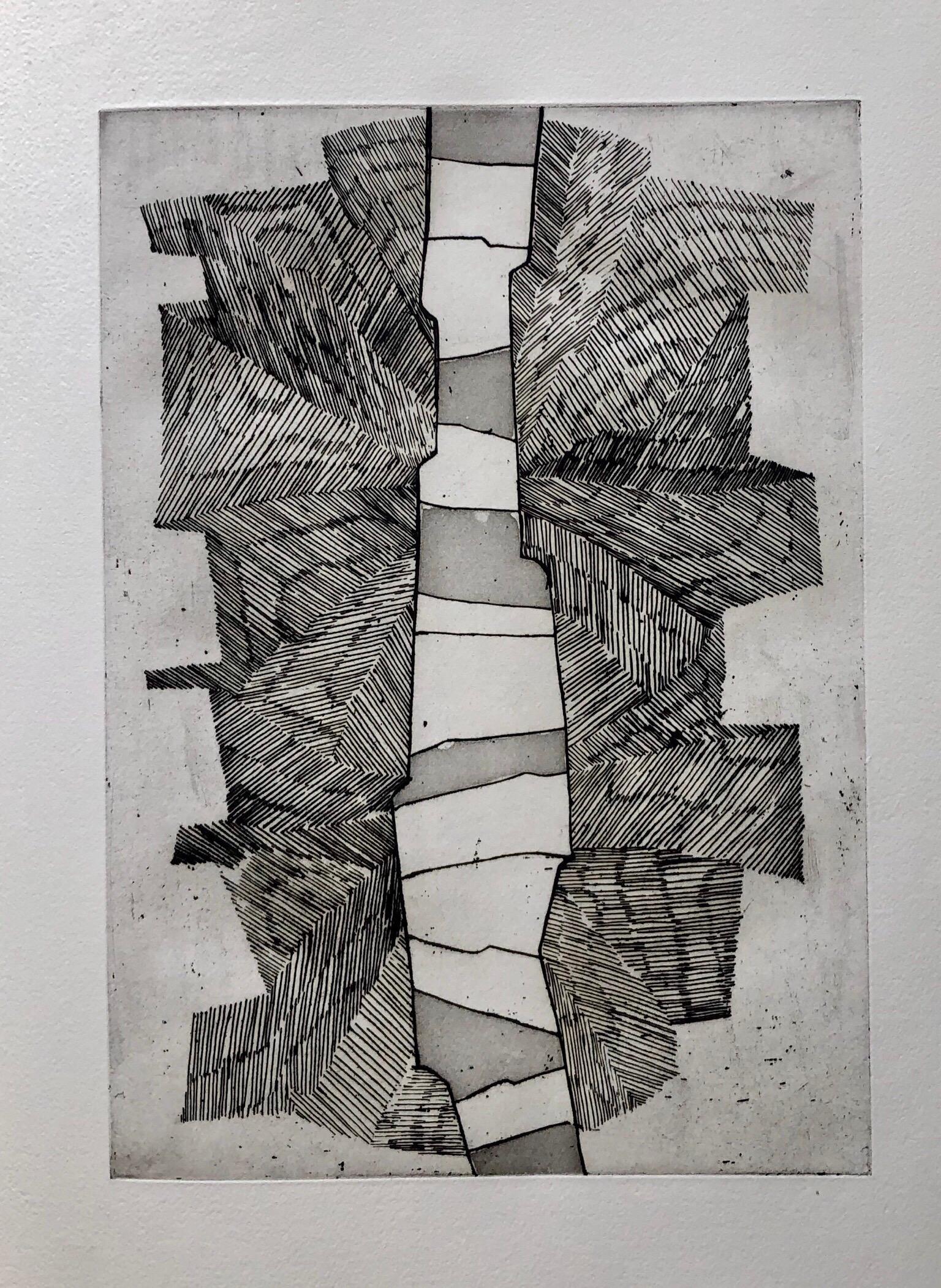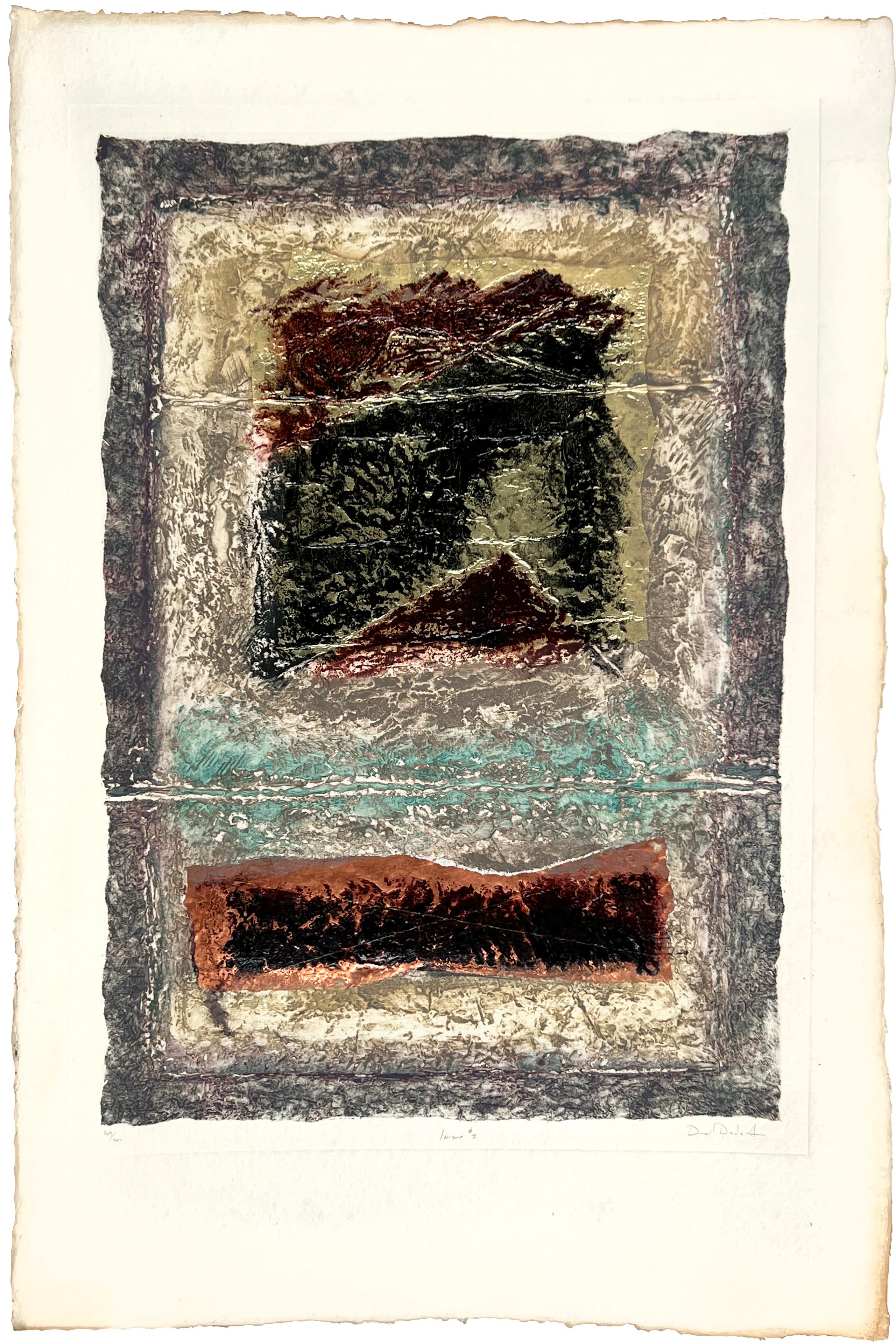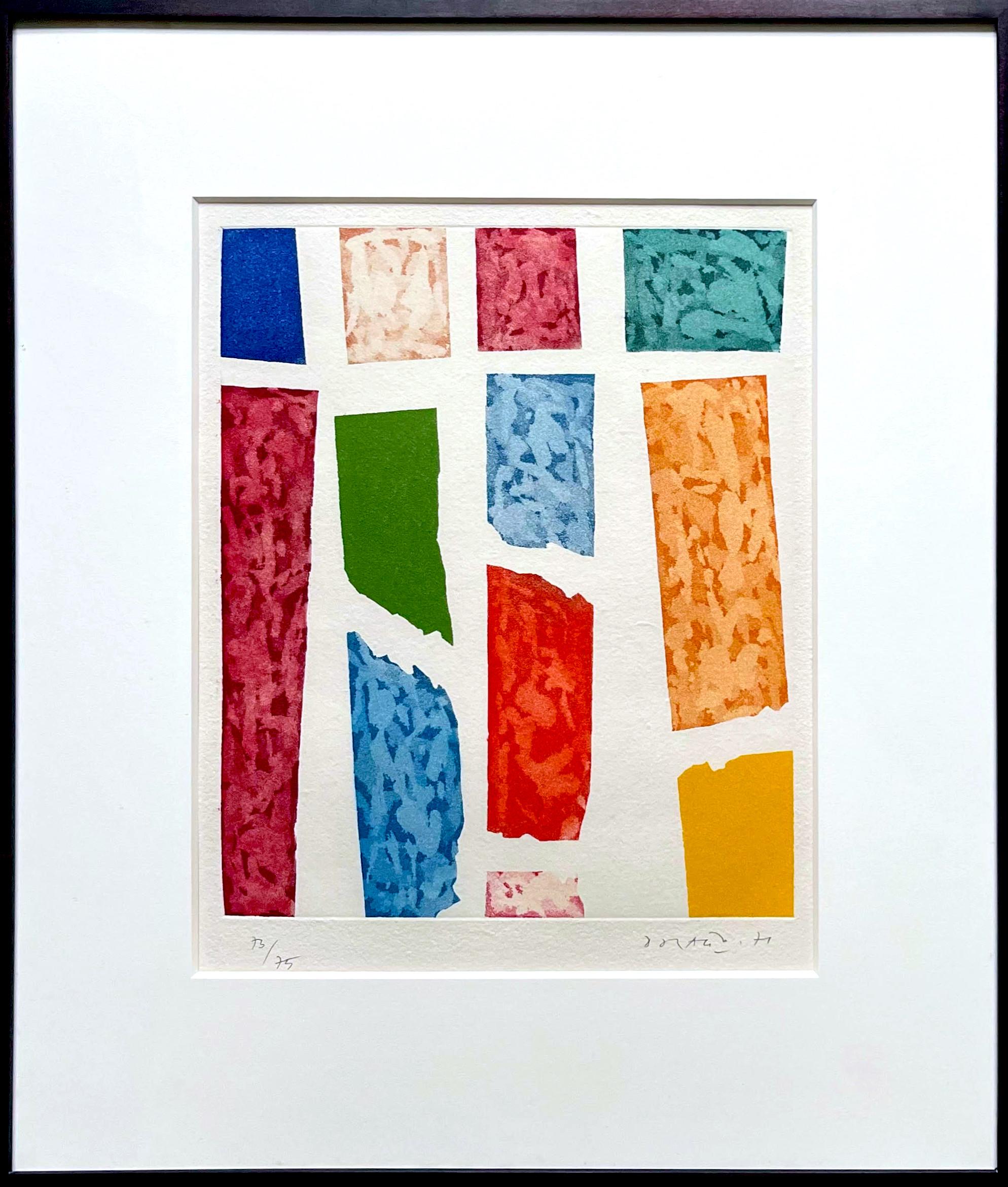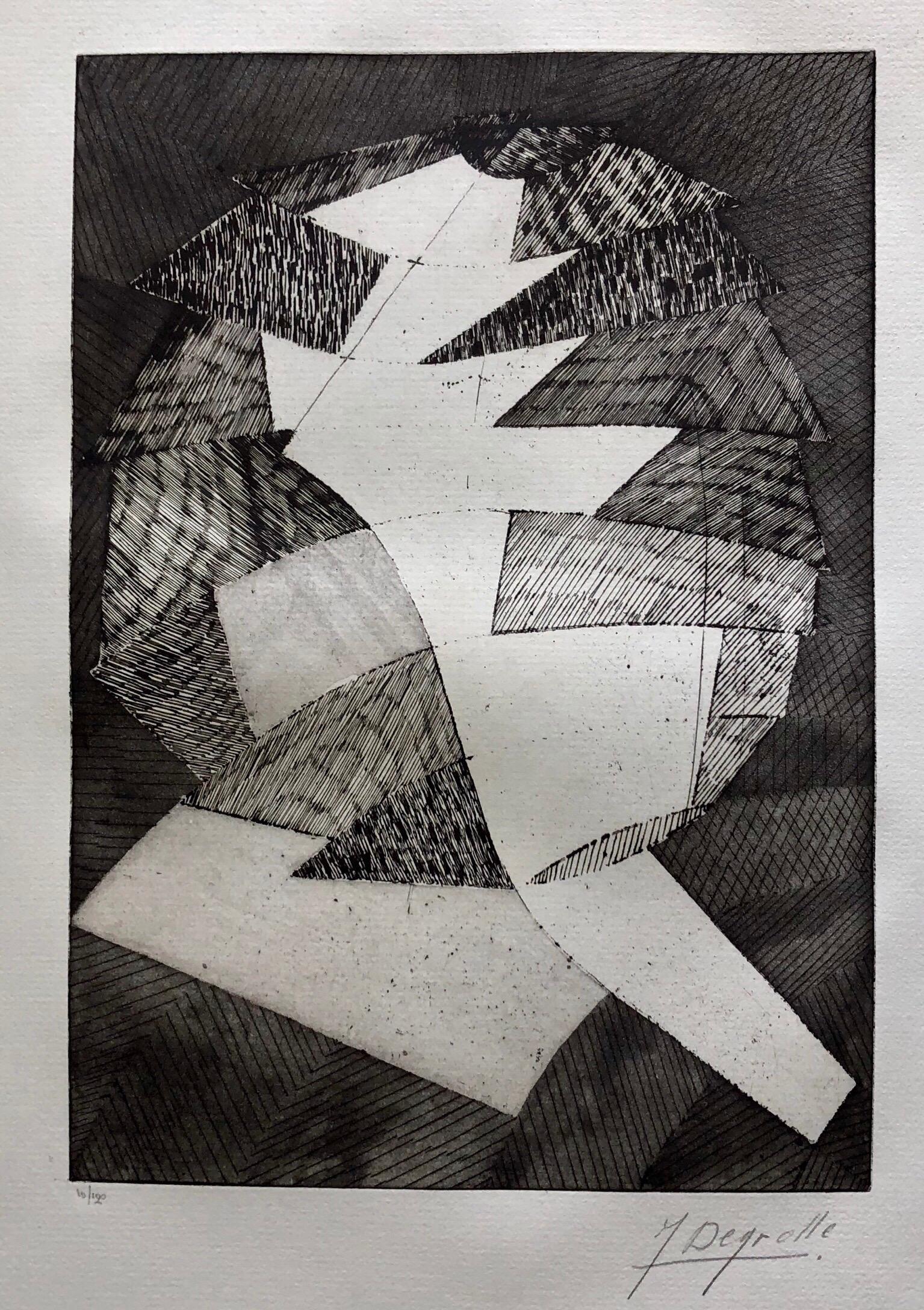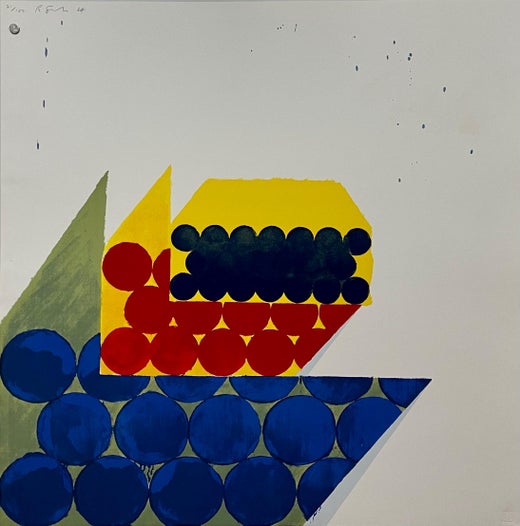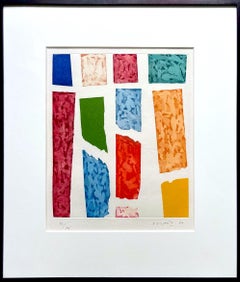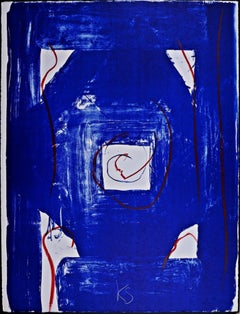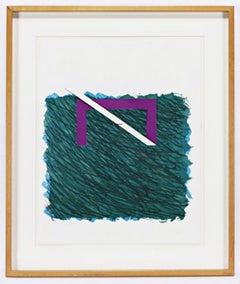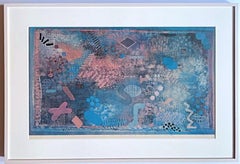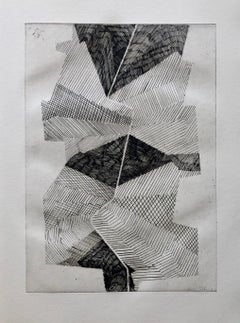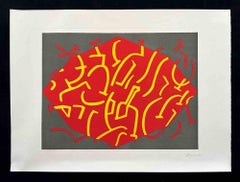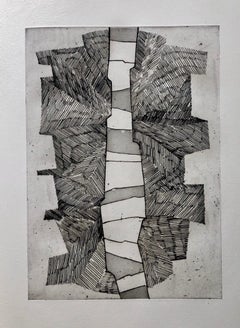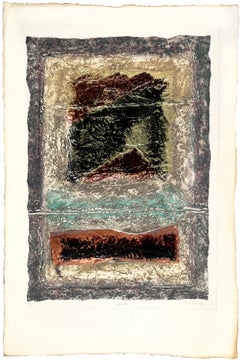Items Similar to Richard Smith, Signature Etching & Aquatint Signed 17/25 British Pop Art pioneer
Want more images or videos?
Request additional images or videos from the seller
1 of 7
Richard SmithRichard Smith, Signature Etching & Aquatint Signed 17/25 British Pop Art pioneer1997
1997
$1,000
£781.08
€885.45
CA$1,433.61
A$1,572.59
CHF 822.81
MX$18,717
NOK 10,392.54
SEK 9,748.38
DKK 6,613.01
About the Item
Richard Smith
Signature, 1997
Etching and Aquatint
22 3/4 × 18 inches
Edition 17/25
Signed and numbered 17/25 in graphite on the lower front
RICHARD SMITH BIOGRAPHY
Charles Richard "Dick" Smith was an English printmaker and painter.
Smith was born in Letchworth, Hertfordshire, to Doris (née Chandler), a nurse and daughter of a chemical company director. He studied at Hitchin Grammar School and Luton School of Art. After military service with the Royal Air Force in Hong Kong, he attended St Albans School of Art followed by post-graduate studies at the Royal College of Art, London, from 1954-57. Smith shared a flat-cum-studio with Peter Blake in his second year at the RCA, and then again for two years after he left the college in 1957. When Terence Conran's Soup Kitchen opened on Fleet Street in the late 1950s, it featured a letter-collage mural by Smith and Blake. Michael Chow would later commission Smith to design installations for his restaurant in Los Angeles, and Chow and Conran have remained two of his biggest supporters.
In 1959 he moved to New York to teach on a Harkness Fellowship, staying for two years, where he produced paintings combining the formal qualities of many of the American abstract painters which made references to American commercial culture. The artist's first solo exhibition was at the Green Gallery. As his work matured it tended to be more minimal, often painted using one colour with a second only as an accent.
In trying to find ways of transposing ideas, Smith began to question the two-dimensional properties of art itself and to find ways by which a painting could express the shape of reality as he saw it. He began to take the canvas off the stretcher, letting it hang loose, or tied with knots, to suggest sails or kites - objects which could change with new directions rather than being held rigid against a wall, and taking painting close to the realm of sculpture. These principles he carried into his graphic work by introducing cut, folded and stapled elements into his prints; some works were multi-leaved screenprinting, and others printed onto three-dimensional fabricated metal.
Smith returned to England in 1963 - specifically East Tytherton, Wiltshire where Howard Hodgkin was a neighbour - and gained critical acclaim for extending the boundaries of painting into three dimensions, creating sculptural shaped canvases with monumental presence, which literally protruded into the space of the gallery. Evocative titles such as Panatella and Revlon, and cosmetic, synthetic colours alluded to the consumer landscapes of urban America which had proved so influential. He showed at the Kasmin Gallery, a venture between Kas and the Marquess of Dufferin and Ava in New Bond Street, throughout the 60s, more-widely known as David Hockney's first gallery.
After being awarded the Grand Prize at the 9th São Paulo Biennial in 1967 and important exhibitions at Kasmin in 1963, Tate in 1964, and Richard Feigen Gallery in 1966, Smith was invited to exhibit at the XXXV Venice Biennale as the official British artist in 1970. Smith was chosen by a committee of art experts, who were Director of Tate Norman Reid, art historian Alan Bowness, art collector David Thompson, the British Council’s Lilian Somerville and art historian Norbert Lynton. Smith taught with Richard Hamilton at Gateshead in 1965, where he met Mark Lancaster and Stephen Buckley, and again in 2000, becoming close to the artist and his wife, Terry.
By the late 1960s Smith's ambition to produce paintings which shared a common sensibility with other media, such as film and photography, began to wane and he focused on the formal qualities of painting. The freestanding installation Gazebo exhibited at the Architectural League of New York in 1966, and a tent project at the Aspen Design Conference of the same year, led to the development of his renowned ‘Kite’ paintings. First exhibited in New York in 1971, the traditional wooden supports of the canvases were replaced by aluminium rods and strings, allowing them to be hung freely in response to the surrounding architecture. Smith continued in the subsequent decades to construct site-specific works in public and private spaces often hanging from the ceilings or architectural supports. He resettled in Patchogue, New York in around 1977.
Smith was awarded the CBE in 1971. His work is held in the public collections of the Arts Council of Great Britain; The British Museum, London; Metropolitan Museum of Art, New York; The Museum of Modern Art, New York; Tate Gallery, London; Victoria and Albert Museum, London; Walker Art Center, Minneapolis; the Whitney, New York; MIT, Boston; Philadelphia Museum of Art; Museum of Contemporary Art, Chicago; Hirshhorn Museum and Sculpture Garden, Washington, DC. Private collectors included David Bowie.
“Where the first great abstract painters, including Kandinsky, Delaunay and Mondrian, derived their forms and colour harmonies essentially from nature, half a century later Richard Smith was at the forefront of a development in painting that took its cues not from the natural world but from visual stimuli already processed through culture. Smith’s joyful embrace of glamour and prismatic colour after the grey decade and a half of postwar austerity, brought him within the orbit of Pop Art at its very inception and assured him an important place in its early history.” Marco Livingstone, 2014
- Creator:Richard Smith (1931 - 2016, English)
- Creation Year:1997
- Dimensions:Height: 22.75 in (57.79 cm)Width: 18 in (45.72 cm)
- Medium:
- Movement & Style:
- Period:
- Condition:Very good condition with gentle handling around the edges which will frame out.
- Gallery Location:New York, NY
- Reference Number:1stDibs: LU1745215034472
Richard Smith
Charles Richard "Dick" Smith was an English printmaker and painter. He Attended St Albans School of Art followed by post-graduate studies at the Royal College of Art, London, from 1954-57. Smith shared a flat-cum-studio with Peter Blake in his second year at the RCA, and then again for two years after he left the college in 1957. When Terence Conran's Soup Kitchen opened on Fleet Street in the late 1950s, it featured a letter-collage mural by Smith and Blake. Michael Chow would later commission Smith to design installations for his restaurant in Los Angeles, and Chow and Conran have remained two of his biggest supporters. In 1959 he moved to New York to teach on a Harkness Fellowship, staying for two years, where he produced paintings combining the formal qualities of many of the American abstract painters which made references to American commercial culture. The artist's first solo exhibition was at the Green Gallery. As his work matured it tended to be more minimal, often painted using one colour with a second only as an accent. In trying to find ways of transposing ideas, Smith began to question the two-dimensional properties of art itself and to find ways by which a painting could express the shape of reality as he saw it. These principles he carried into his graphic work by introducing cut, folded and stapled elements into his prints; some works were multi-leaved screenprinting, and others printed onto three-dimensional fabricated metal. Smith returned to England in 1963 - specifically East Tytherton, Wiltshire where Howard Hodgkin was a neighbour - and gained critical acclaim for extending the boundaries of painting into three dimensions, creating sculptural shaped canvases with monumental presence, which literally protruded into the space of the gallery. Evocative titles such as Panatella and Revlon, and cosmetic, synthetic colours alluded to the consumer landscapes of urban America which had proved so influential. He showed at the Kasmin Gallery, a venture between Kas and the Marquess of Dufferin and Ava in New Bond Street, throughout the 60s, more-widely known as David Hockney's first gallery. Smith was invited to exhibit at the XXXV Venice Biennale as the official British artist in 1970. Smith taught with Richard Hamilton at Gateshead in 1965, where he met Mark Lancaster and Stephen Buckley, and again in 2000, becoming close to the artist and his wife, Terry. By the late 1960s Smith's ambition to produce paintings which shared a common sensibility with other media, such as film and photography, began to wane and he focused on the formal qualities of painting. First exhibited in New York in 1971, the traditional wooden supports of the canvases were replaced by aluminium rods and strings, allowing them to be hung freely in response to the surrounding architecture. Smith continued in the subsequent decades to construct site-specific works in public and private spaces often hanging from the ceilings or architectural supports. He resettled in Patchogue, New York in around 1977. Smith was awarded the CBE in 1971.
About the Seller
5.0
Platinum Seller
Premium sellers with a 4.7+ rating and 24-hour response times
Established in 2007
1stDibs seller since 2022
462 sales on 1stDibs
Typical response time: 2 hours
- ShippingRetrieving quote...Shipping from: New York, NY
- Return Policy
More From This Seller
View AllGeometric Abstraction, Ex-Bank of New York Collection Lithograph SIgned/N Framed
By Piero Dorazio
Located in New York, NY
Piero Dorazio
Abstract Composition (Bank of New York Corporate Collection), 1971
Lithograph on wove paper
Pencil signed, numbered 73/75 and dated on the front. The back bears a label...
Category
1970s Abstract Geometric Abstract Prints
Materials
Lithograph
Kimber Smith, Abstract Expressionist Geometric Abstraction signed/n lithograph
By Kimber Smith
Located in New York, NY
KIMBER SMITH
Untitled Abstract Expressionist Geometric Abstraction, 1967
Lithograph on Rives paper
25 × 19 3/5 inches
Signed in silver...
Category
1960s Abstract Geometric Abstract Prints
Materials
Lithograph
Bramble, 1970 abstract lithograph by British Pop art pioneer Signed/N, Framed
By Richard Smith
Located in New York, NY
Richard Smith
Bramble, 1970
Lithograph on wove paper
Signed, numbered and dated 10/75 in pencil lower left
Frame included: held in original vintage period frame
Pencil signed, dated ...
Category
1970s Abstract Abstract Prints
Materials
Pencil, Lithograph
Abstract Expressionist monotype (unique), signed and inscribed with heart Framed
By Robert Natkin
Located in New York, NY
Robert Natkin
monotype (unique) on paper
signed in marker on the front
Pencil signed, and inscribed with heart doodle:
"For Dorothy and Arthur with my Love Natkin"
Provenance: collec...
Category
1970s Abstract Abstract Prints
Materials
Monotype
Hard Edge Minimalist Etching (Geometric Abstraction) from the 1960s SIgned/N
Located in New York, NY
Brian Wall
Untitled Hard Edge Minimalist Etching (Geometric Abstraction) from the 1960s, 1969
Etching on wove paper with deckled edges
Hand signed and numbered 22/75 by the artist in...
Category
1960s Hard-Edge Abstract Prints
Materials
Etching
Calibrate, 16 color Etching/Aquatint/Engraving/Lithograph, Signed 12/30, Framed
By Nancy Graves
Located in New York, NY
Nancy Graves
Calibrate, 1981
16 color etching, aquatint, engraving and lithograph. Printed from 5 copper plates, 1 zinc plate and 1 stone
Hand signed, numbered 12/30 dated on the fro...
Category
1980s Abstract Abstract Prints
Materials
Etching, Aquatint, Lithograph
You May Also Like
French Avant Garde Bold Abstract Geometric Aquatint Etching Op Art Kinetic
By Jean Deyrolle
Located in Surfside, FL
Original etching, aquaforte, aquatint engraving. poetry text by Robert Pinget on facing fold of sheet. The individual sheet is unsigned. The justification page is hand signed by t...
Category
1960s Abstract Geometric Abstract Prints
Materials
Etching, Aquatint
Untitled - Etching and Aquatint by Carla Accardi - 1990s
By Carla Accardi
Located in Roma, IT
Etching and Aquatint made on zinc plate on Magnani-Pescia paper 310 gr/m2, paper size 75cm x 55cm, work size 55cm x 40.5 cm. Excellent condition, slight signs of use, no defects.
Gr...
Category
1990s Abstract Abstract Prints
Materials
Etching, Aquatint
French Avant Garde Bold Abstract Geometric Aquatint Etching Op Art Kinetic
By Jean Deyrolle
Located in Surfside, FL
Original etching, aquaforte, aquatint engraving. poetry text by Robert Pinget on facing fold of sheet. The individual sheet is unsigned. The justification page is hand signed by t...
Category
1960s Abstract Geometric Abstract Prints
Materials
Etching, Aquatint
"Insignia" #1 Hand Made Paper Aquatint Abstract
Located in Soquel, CA
"Insignia" #1 Hand Made Paper Aquatint Abstract
Tactile Abstract on handmade paper by David Dodsworth (English, b-1952) David’s work is typified by his...
Category
1980s Abstract Expressionist Abstract Prints
Materials
Gold Leaf
French Avant Garde Bold Abstract Geometric Aquatint Etching Op Art Kinetic
By Jean Deyrolle
Located in Surfside, FL
Original etching, aquaforte, aquatint engraving. Hand pencil signed and numbered. Published by Editions Denise René, Paris.
Number: 10 from the folio edition of 120 which were on ...
Category
1960s Abstract Geometric Abstract Prints
Materials
Etching, Aquatint
Jean Miotte - Abstract Composition - Original Signed Etching
By Jean Miotte
Located in Collonge Bellerive, Geneve, CH
Jean Miotte - Original Signed Etching
1994
Dimensions: 41 x 33 cm
Signed and numbered in pencil
Edition: /60
From Près du mur
Category
1990s Abstract Expressionist Abstract Prints
Materials
Etching
More Ways To Browse
Vintage Cues
Vintage Conrans
Dick English
Alan Thompson
Philip Guston Prints
Picasso Affiches
Picasso Chat
Pierre Gaillardot
Quelques Fleurs Pour Des Amis
Rauschenberg Collage
Robert Barry
Robert Fisher
Robert Indiana Two
Robert Motherwell Africa
Robert Motherwell Octavio Paz
Roy Lichtenstein Plate
Ruth Alexander
Sam Francis Monotype
